Did you know that there are many exciting mines and caves in Germany to visit? We have visited the bat cave in Bad Segeberg, and can also recommend a salt mine with a long history, a cave with Stone Age artefacts and several caves with large stalagmites and stalagmites.
Table of contents
Mines and caves in Germany
Our visit to the bat cave in Bad Segeberg a few years ago was a pleasant surprise. We had also planned to visit the open-air theatre "Karl May Spiele", which is right next door, but it didn't work out as planned because we came to the "Karl May Spiele". wrong day of the week. Fortunately, the cave alone proved to be worth the detour. And yes, there are many more mines and caves in Germany, we discovered.
Today, in co-operation with the German Tourist Office, we present 7 exciting German caves.
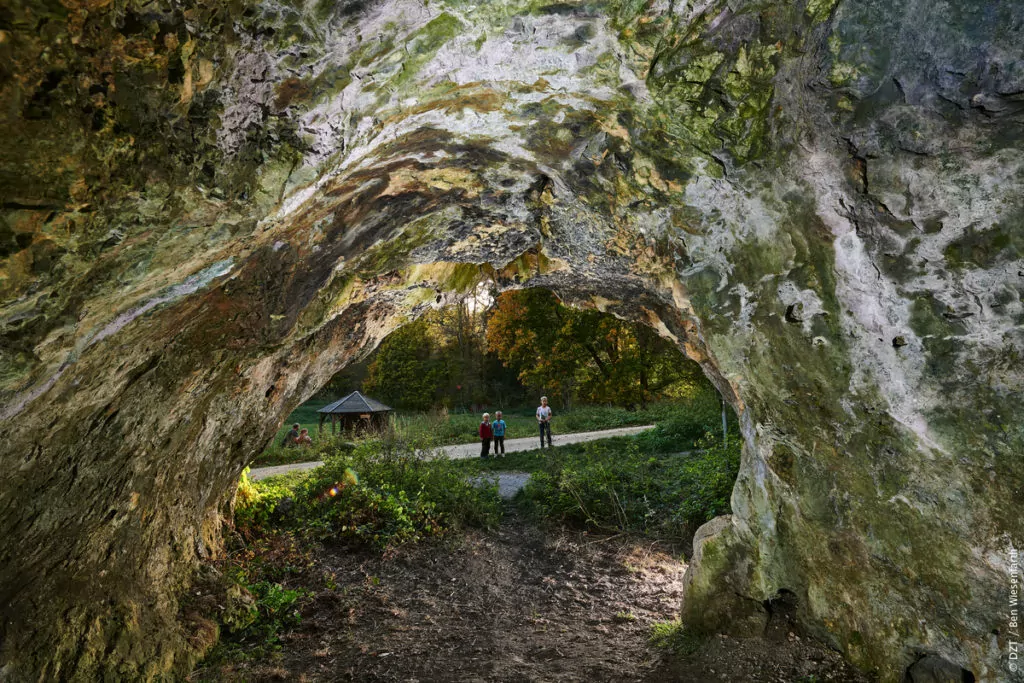
1. Bavaria: Berchtesgaden salt mine
Berchtesgaden in Bavaria has a history of salt extraction dating back to the 12th century. The salt mine that exists here today (Salzbergwerk Berchtesgaden) was opened in 1517 and has been in continuous operation ever since. The mine is located up to 300 metres below the surface.
A special experience you can take part in is having dinner in the salt mine. You can put on a miner's suit, be served a glass of sekt (German sparkling wine), take a miniature train 650 metres into the mine, have a guided tour and then be served a buffet dinner with drinks. Nearby attractions include the Berchtesgaden National Park with its dramatic mountain views and beautiful lakes.

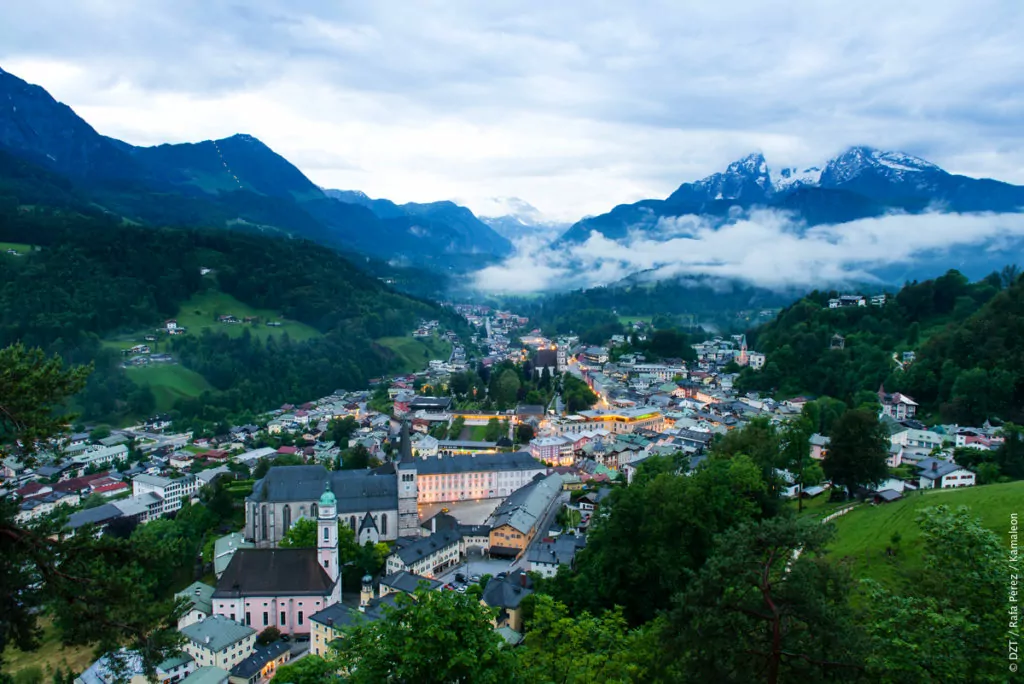
- Address: Bergwerkstrasse 83, Berchtesgaden,
- Ticket price: Adult €25.50/Child €13.00 (2025).
- Read more: Website of the cave
- Campsites in the neighbourhood: Camping Simonhof (Alte Reichenhallerstrasse 110, Ramsau) or Camping Allweglehen (Allweggasse 4, Berchtesgaden).
- Pitches in the neighbourhood: Parking Kehlstein (Obersalzbergstrasse, Berchtesgaden) or Reisemobilstellplatz Allweglehen (Allweggasse 4, Berchtesgaden).
- More to see in the area: Berchtesgaden National Park, Lake Königssee and Munich.
2nd Baden-Württemberg: Hohle Fels in Schelklingen
Hohle Fels, meaning 'hollow rock', is one of the largest indoor caves in the Swabian Alb mountain range. Archaeological finds from the Neolithic and Neanderthal periods have been found here, including weapons, jewellery and artefacts. The cave can usually be visited from 1 May to 31 October. It is closed in winter to protect the animals that hibernate here.
If you like caves, there are even more in the area around Blaubeuren, right next to the Hohle Fels. The area is protected by UNESCO and many exciting discoveries have been made in the various caves. The museum in Blaubeuren includes a bone flute, which is the oldest musical instrument in the world to date. Less than an hour away by car is the magically beautiful Lichtenstein Castle.
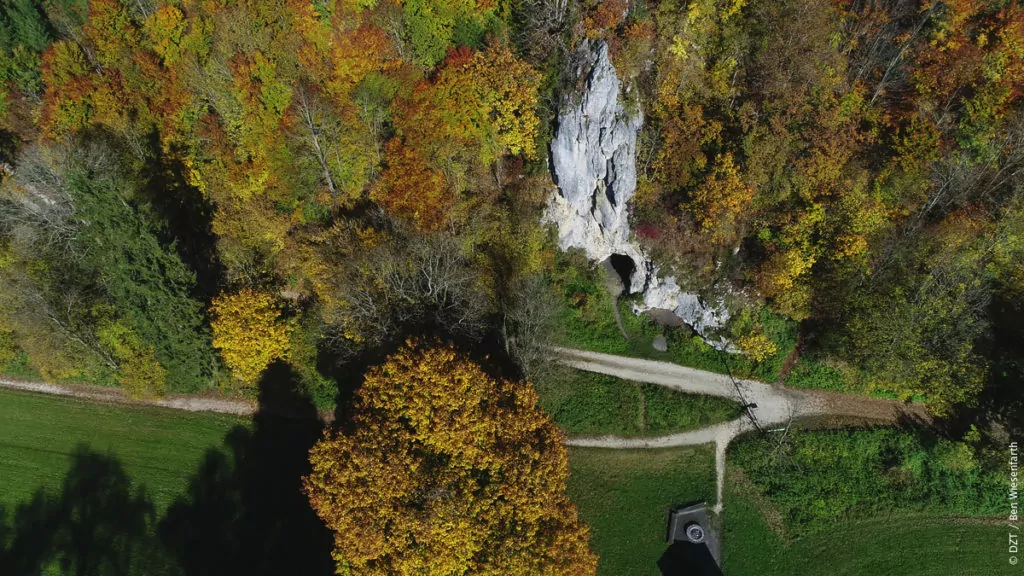
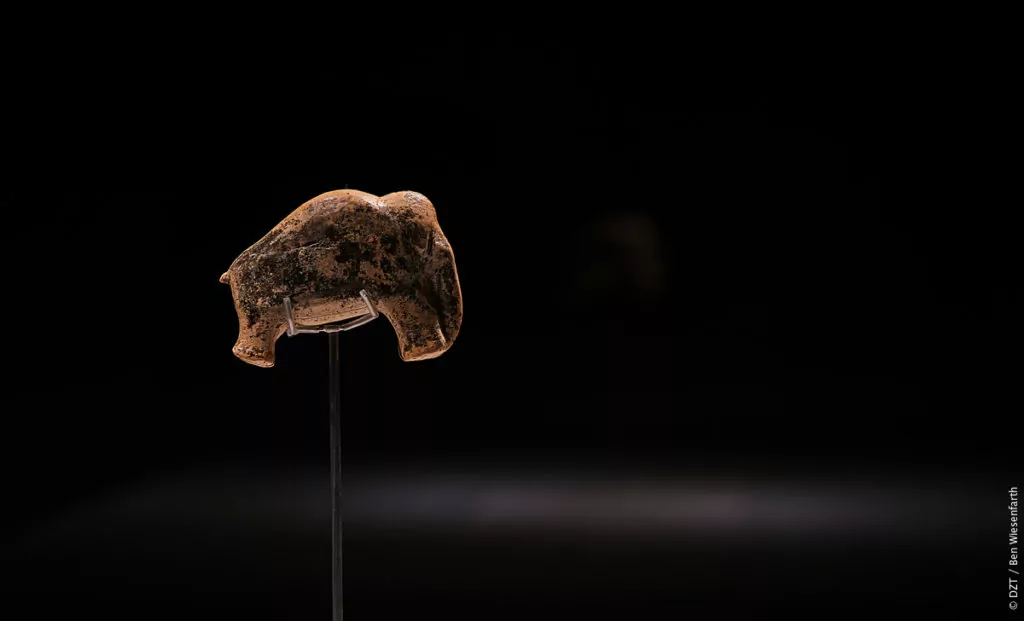
- Address: Hohler-Felsen-Weg, Schelklingen
- Ticket price: Adult €3.00 / Child €1.00 (2020).
- Read more: Website of the cave
- Campsites in the neighbourhood: Camping in Hopfenburg (Hopfenburg 12, Münsingen) or Camping Christophrus (Werte 6, Kirchberg).
- Parking space in the neighbourhood: Hohle Fels car park (Auf dem Hauchen, Schelklingen).
- More to see in the area: Museum in Blaubeuren, Lichtenstein Castle and the city of Ulm.
3. Saxony-Anhalt: Rübeländer dripstone caves in the Harz Mountains
There are two caves in the cave town of Rübeland: the Baumannshöhle cave and the Hermannshöhle cave. According to legend, Baumansshöhle was discovered around 1536 by the miner Friedrich Baumann, which is how the cave got its name. The cave consists of many interconnected cavities, the main one being the so-called Goethe Hall, where concerts are held today.
Hermannshöhle is located right next to Baumannshöhle. This cave is famous for its stalagtites and the bones of the cave bear. Nearby you can visit the Harz National Park, with the Brocken mountain rising to a peak of 1141 metres. Travellers can take the Brockenbahn steam train to the Brocken terminus, which is the highest railway station in Germany.
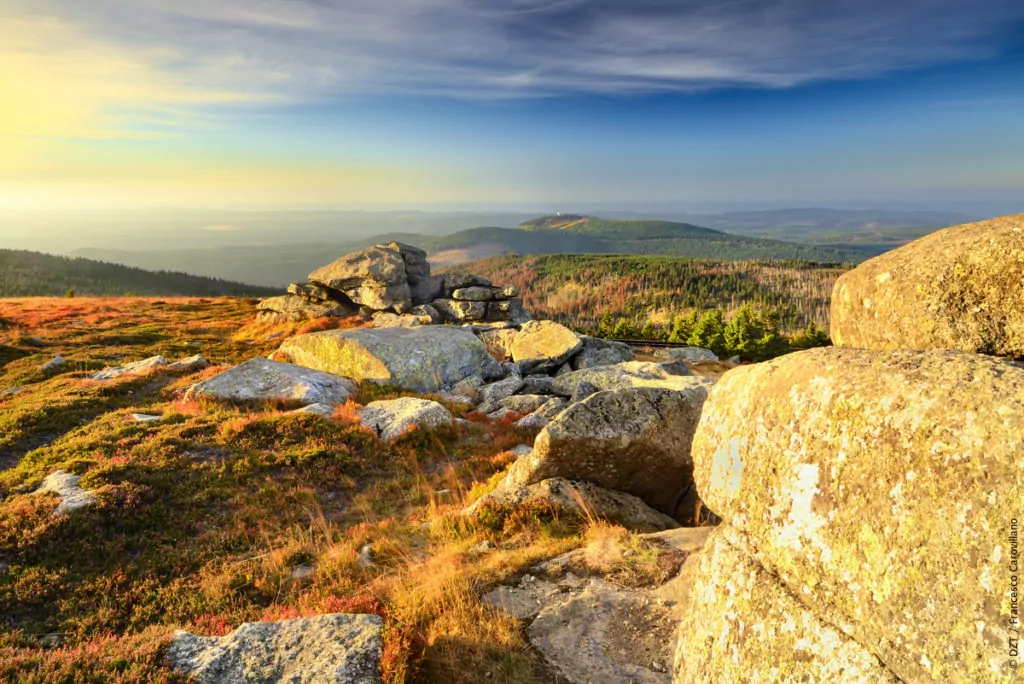
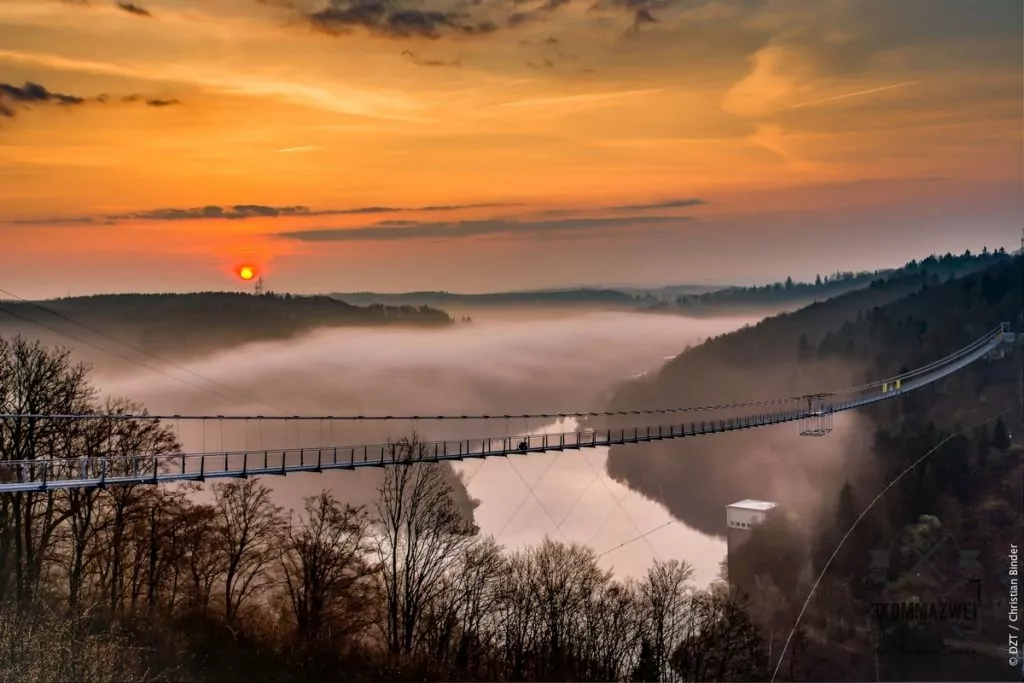
- Address: Blankenburger Str. 36, Oberharz am Brocken (Baumanshöhle) and Hasselfelder Strasse 2 (Hermansshöhle).
- Ticket price: Adults €6.00/Children €4.00 (2020).
- Read more: Website of the cave
- Campsites in the neighbourhood: Camping at the Brocken (Schützenring 6, Elbingerode) or Camping Panoramablick (Hinterdorf 79, Dankerode).
- More to see in the area: The Harz National Park, the Brocken mountain, the Harzer Schmalspurbahn (narrow gauge railway with steam locomotives) and the city Quedlinburg.
4th Saxony: Drachenhöhle Syrau in Vogtland
Drachenhöhle means 'dragon cave' in Swedish. Located 16 metres below the surface, the cave offers a hidden and fantastic world where you will find stalagtites, interesting formations and an underground lake. Are there also dragons? You might have to come here and find out for yourself! In any case, the website promises that this is an experience for the whole family. Apparently, you can also experience LED lighting and background music here.
Nearby attractions include the Thuringian Schiefergebirge/Obere Saale Nature Park, with its winding Saale River. If you prefer to visit cities, you can go to Chemnitz or Leipzig.
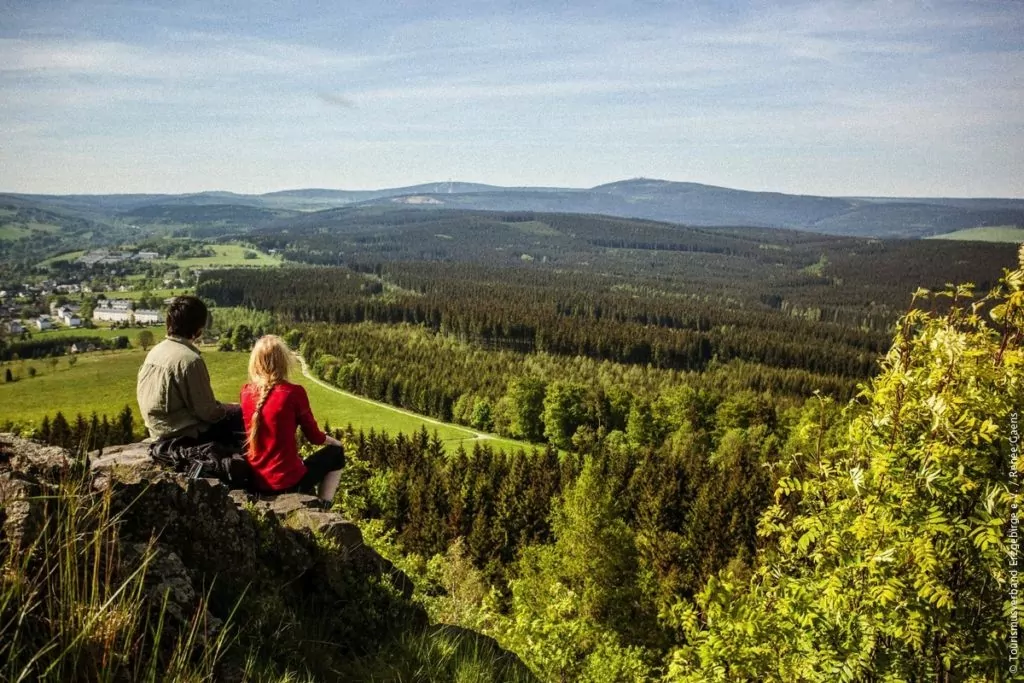
- Address: Höhlenberg 10, Paul Seifert Street, Syrau.
- Ticket price: Adults €9.00/Children €6.50 (2020).
- Read more: Website of the cave
- Campsites in the neighbourhood: Camping Lindenau (Am Forstteich, Lindenau/Schneeberg) or Camping Gunzenberg (Möschwitz, Hauptstrasse 38, Pöhl).
- Parking space in the neighbourhood: Drachenhöhle Syrau (Paul Seifertstrasse, Syrau).
- More to see in the area: Thuringian Slate Mountains/Upper Saale Nature Parks, the city Chemnitz and Leipzig.
5th Thuringia: Saalfeld fairy cave
Feengrotte means 'fairy cave' in Swedish. This cave is particularly famous for its coloured stalactites and its magical world of fairies. There is a whole adventure world for children with different experiences and also an "adventure museum".
If you like wine, you can visit the Saale-Unstrut wine region. You can also take a trip to Moritzburg Castle, which is considered one of the most beautiful castles in the area. Built as a hunting lodge in the 16th century, the castle sits on an island surrounded by artificial lakes and canals.
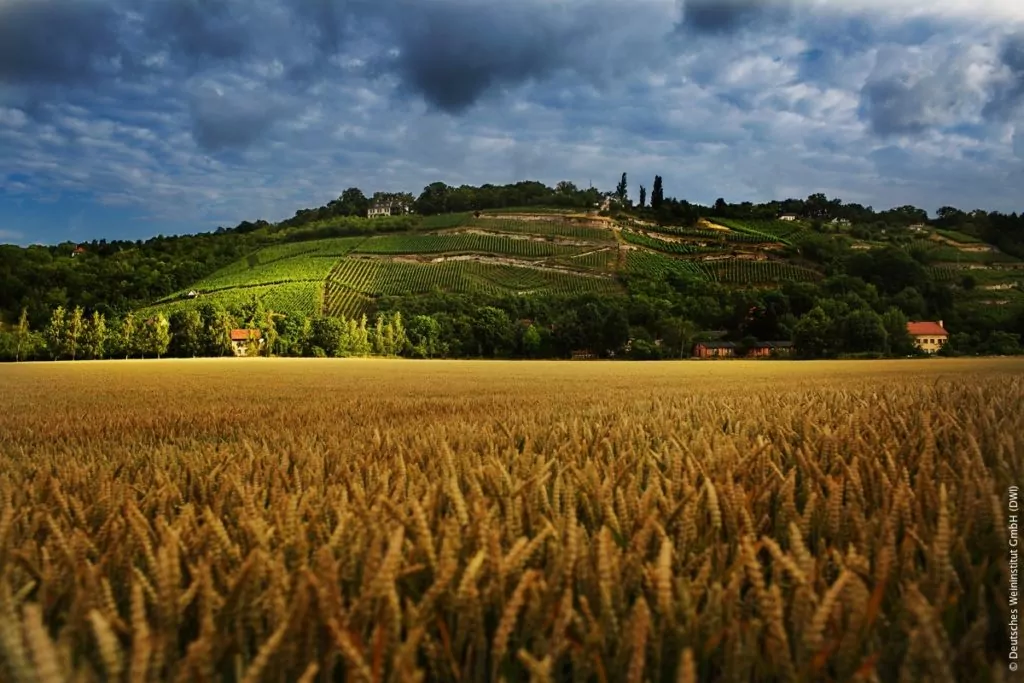
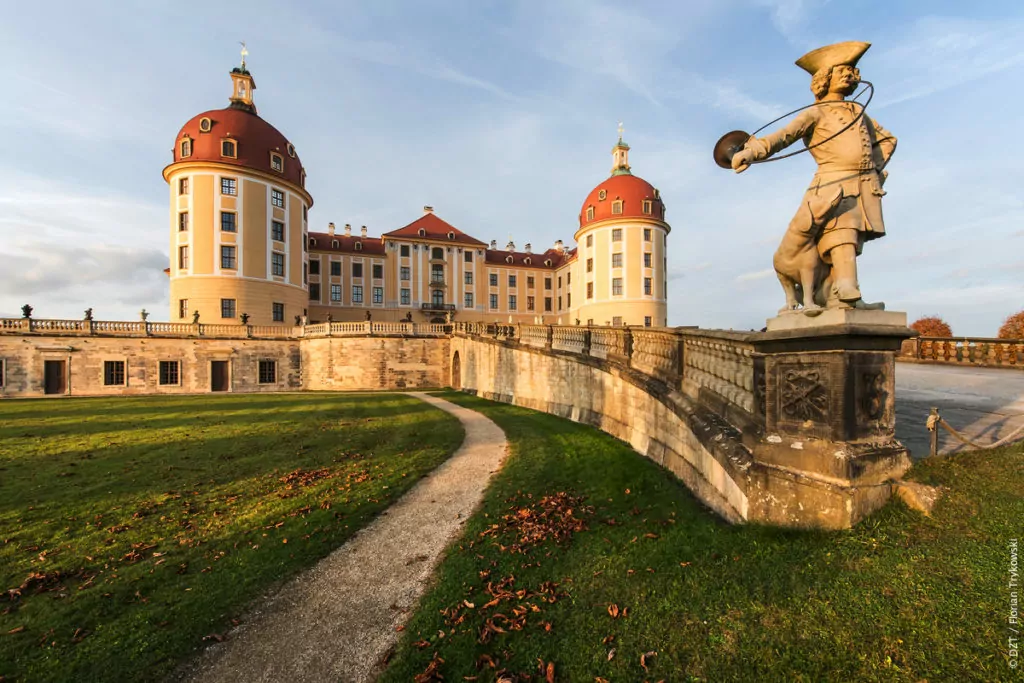
- Address: Feengrottenweg 2, Saalfeld/Saale.
- Ticket price: Adults €11.90/Children €7.90 (2020).
- Read more: Website of the cave
- Campsites in the neighbourhood: Camping Weissensee (Günstedter Strasse, Weissensee) or Camping am Tor zum Hainrich (Hainichstrasse 22, Weberstedt).
- Parking space in the neighbourhood: Feengrotten Saalfeld (Feengrottenweg 2,Saalfeld)
- More to see in the area: Moritzburg Castle, the city of Jena and the Saale-Unstrut wine region.
6. North Rhine-Westphalia: Atta Cave in Attendorn
Atta Cave is famous for its large stalactites and stalagmites. The cave was discovered in 1907, while quarrying limestone, and opened to tourists in the same year. Today it is the most visited tourist cave in all of Germany, with around 350,000 tourists per year.
In addition to the exciting formations in the cave, a tasty cheese ripens here, and you can come here to taste both cheese and wine. In the neighbourhood of the cave you will find the Teutoburger Forest. If you want to go on to bigger cities, Bonn and Cologne are just over an hour away by car.
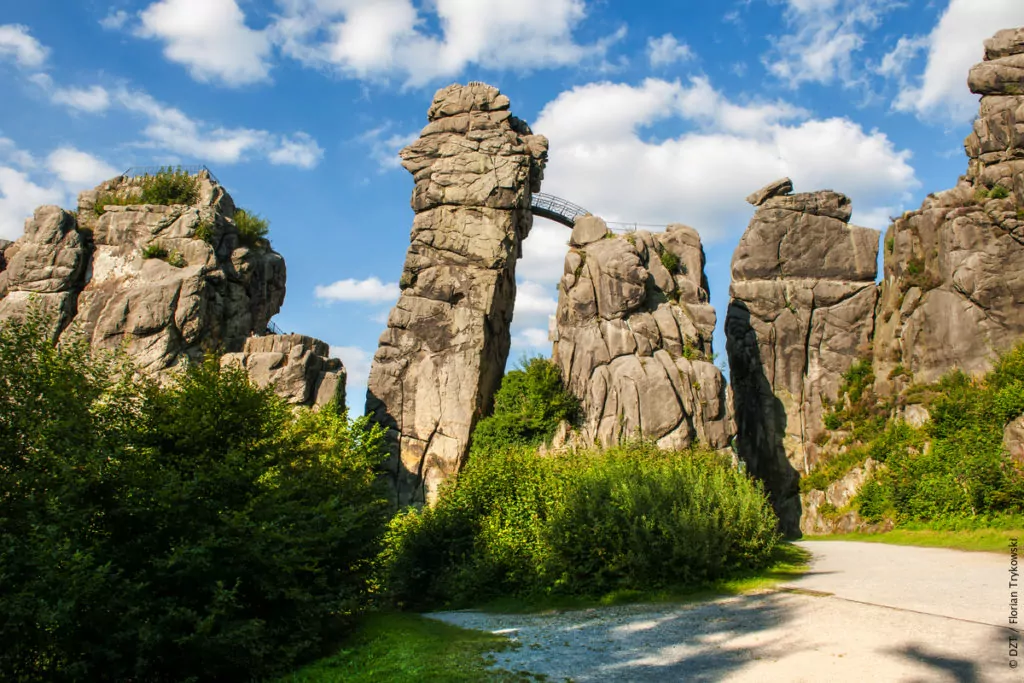
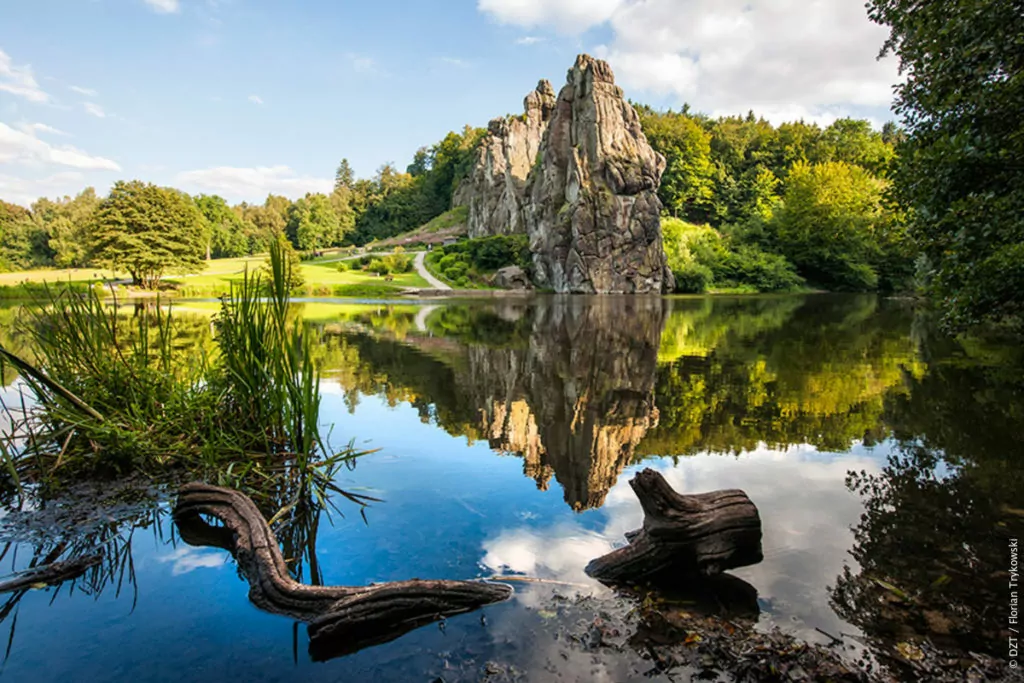
- Address: Finnentroper Str. 39, Attendorn
- Ticket price: Adults €10.00/Children €6.00 (2020).
- Read more: Website of the cave
- Campsites in the neighbourhood: Naturcamping Kessenhammer-Biggesee (Kessenhammer 3, Olpe/Kessenhammer) or Camping Seeblick (Seeuferstr. 2, Meinerzhagen).
- Parking space in the neighbourhood: Atta Cave (Finnentroper Strasse 39, Attendorn).
- More to see in the area: Teutoburg Forest, Bonn and Cologne.
7. Schleswig-Holstein: Kalkberg cave in Bad Segeberg
The Kalkberg cave in Bad Segeberg (Kalkberghöhle) is a large bat cave found by children at play in 1913. It is now known that around 18,000 (!) bats hibernate here every year. To protect the bats from cats, owls and other dangers, a small wooden entrance has been built, and here the owls sit hopefully watching for prey.
We visited this cave in the summer of 2018, which was very interesting. Besides being down in the 2285 metres long cave, we also visited the Noctalis museum. There is educational information about animals and nature for both adults and children (in German, English and Danish). Nearby you can experience Travemünde, Lübeck or the holiday resort Timmendorfer strand, with its long sandy beaches.
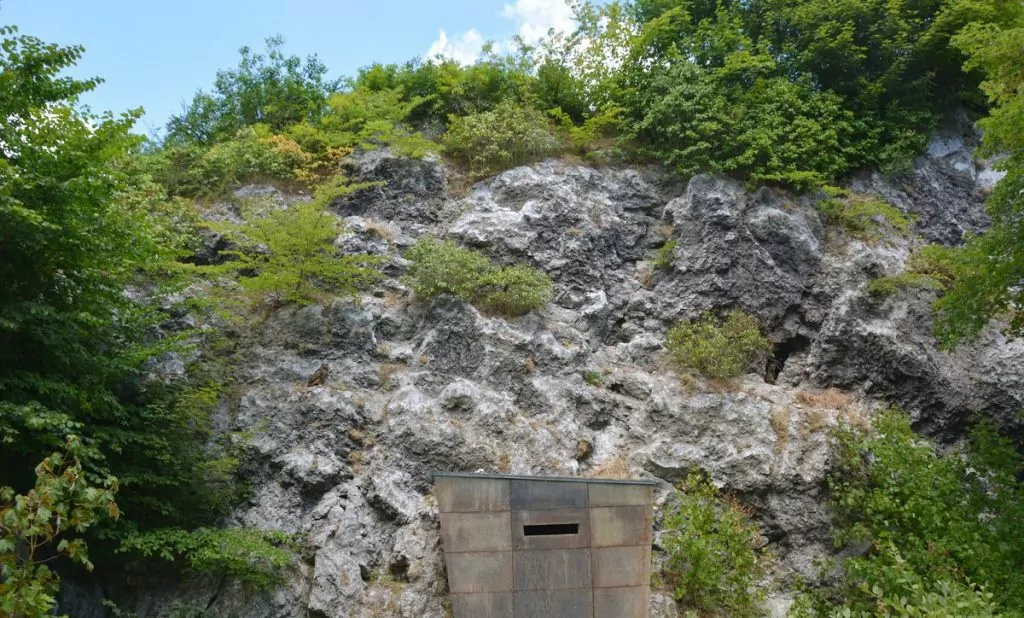
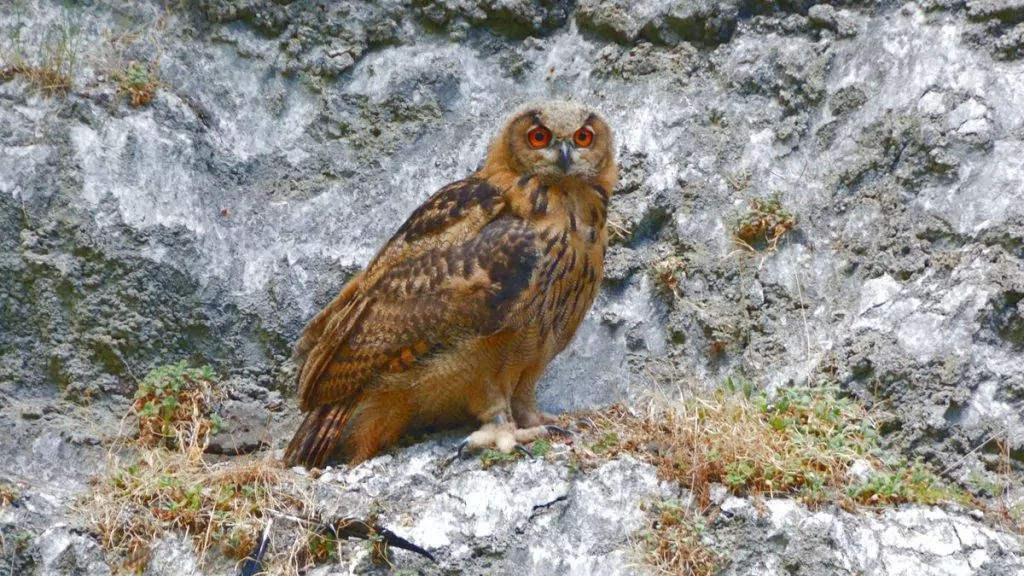
- Address: Oberbergstr. 27, Bad Segeberg
- Ticket price: Adults €12.00/Children €6.00 (2020).
- Read more: Website of the cave and our visit to the cave.
- Campsites in the neighbourhood: Camping Seeblick (Dorfstrasse 59, Dersau) or Sjöcamping Weisser Brunnen (Seestrasse 12, Wittenborn).
- Parking space in the neighbourhood: Kalkbergblick caravan site (Kastanienweg 1, Bad Segeberg).
- More to see in the area: Karl May outdoor theatre play in Bad Segeberg, Timmendorfer Strand, Travemünde and Lübeck.
More mines and caves in Germany?
Do you know of any other mines or caves in Germany that are worth visiting? Let us know!
Pierdrei hotels in Hamburg - stay in a room or caravan
The Pierdrei hotel in Hamburg is a sleek and modern hotel that is perfectly located when...
Trier in the Moselle Valley - Germany's oldest city
Trier is Germany's oldest city, located in the Moselle Valley (Rhineland-Palatinate), near the border with Luxembourg. This...
Green Citadel in Magdeburg - playful and green living
The Green Citadel in Magdeburg is a residential building, but also a spectacular and amazing sight. This house...
Bauhaus 100 years - the story of a German design school
Bauhaus is 100 years old this year, but it's not the DIY store's birthday. No, we...
Beer in Germany - 6 German experiences with a beer theme
What is the best way to experience beer in Germany? Germany has a strong beer culture and it...
Beautiful roads in Germany - themed holiday routes
There are more than 150 beautiful roads in Germany, each with its own theme and packed with...
Christmas in Germany - inspired by German Christmas traditions
Christmas in Germany offers everything from tasty pastries and delicious Christmas food to atmospheric Advent music. I...
Moritzburg Castle near Dresden - a fairytale hunting lodge
Moritzburg Castle near Dresden is a beautiful and fabulous hunting and baroque castle, well worth a visit....
Sailing in Germany - from Krummin to Greifswald
Sailing in Germany can be anything from soaking up the sun on deck to...
Gifts in Germany - 12 must-haves to bring home
What to look for when shopping for gifts in Germany? We present 12 tips...
Motorhome travel in Germany - some reflections from the road
We're on a motorhome trip in Germany, and it's time for some reflections! How is it...
Things to do in Hamburg - 23 sights and experiences
What to do in Hamburg? This northern German city offers harbour life, boat trips, culture and the world's...
Hofgarten Eremitage in Bayreuth - amazing park in Bavaria
The Hofgarten Eremitage in Bayreuth is a large and incredibly beautiful park filled with castles, fountains,...
All about asparagus in Germany - Festivals, Routes and Recipes
Asparagus in Germany - it is far more than just a vegetable. As the asparagus season gets underway...
Rammelsberg Mine - a Unesco World Heritage Site in Goslar
The Rammelsberg mine is a Unesco World Heritage Site in the German town of Goslar, located in the mountainous area of...
Excursions among Germany's lakes
The 'Beach Basket Challenge' campervan trip continues, and it was time for the seven campervans on the trip/competition to...
German food - 25 German dishes and delicacies
German food - what is it really? We list 25 German dishes and delicacies, and tell you...
Festung Königstein - mighty fortress in Germany
Festung Königstein in Germany is Europe's largest existing mountain fortress, rising mightily above the River Elbe....
10 picturesque towns in Germany - a great road trip
Writer: Helena Bergström Today we present ten picturesque towns in Germany - along a route of...
Schwerin Castle - fairytale castle in northern Germany
Schwerin Castle is a beautiful fairytale castle with battlements and towers, located in northern Germany....
Things to do in Bamberg - 14 tips for a lovely German town
What to see and do in Bamberg, Germany? This fine and delightful German city, whose...
Things to do in Wittenberg - 11 tips for the Lutheran city in Germany
What to do in Wittenberg, Germany? In this city, officially called 'Lutherstadt Wittenberg'...
Sweden in Germany - 12 places with a Swedish connection
There is more of Sweden in Germany than you might realise. In fact, you...
What to do in Hannover - 15 sights and experiences
What to do in Hannover? We visited the capital city of the German state of Lower Saxony because we...
Wine festivals in Germany - experience autumn wine festivals
Wine festivals are currently taking place in Germany and will continue throughout October and November. If you are...
Visit to the German town of Waren - on Lake Müritz
The German city of Waren is a picturesque little town that sits nicely on the large lake....
Things to do in Magdeburg - 12 tips for the Ottostadt in Germany
What to do in Magdeburg, Germany? This city, sometimes referred to as the 'Ottostadt', has a...
German specialities in different regions - don't miss these
Writer: HELENA BERGSTRÖM German specialities, what are they? German food varies from region to region, and...
Things to see and do in the Hanseatic City of Wismar
There is much to see and do in the Hanseatic city of Wismar in Germany. We've been here...
Germany welcomes motorhomes (and Sweden imposes a ban)
During this trip we spent almost two months in Germany with our motorhome. As...
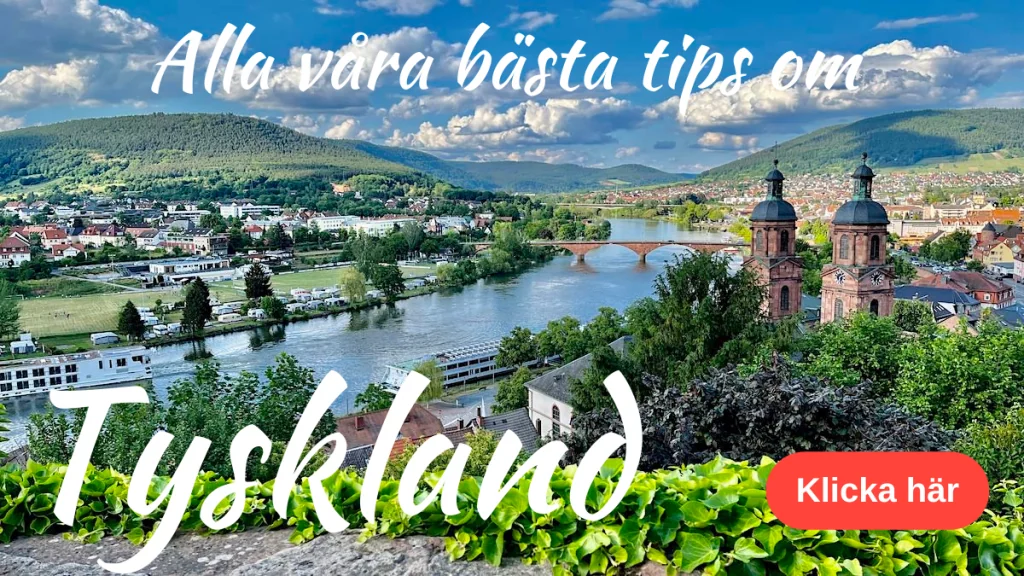


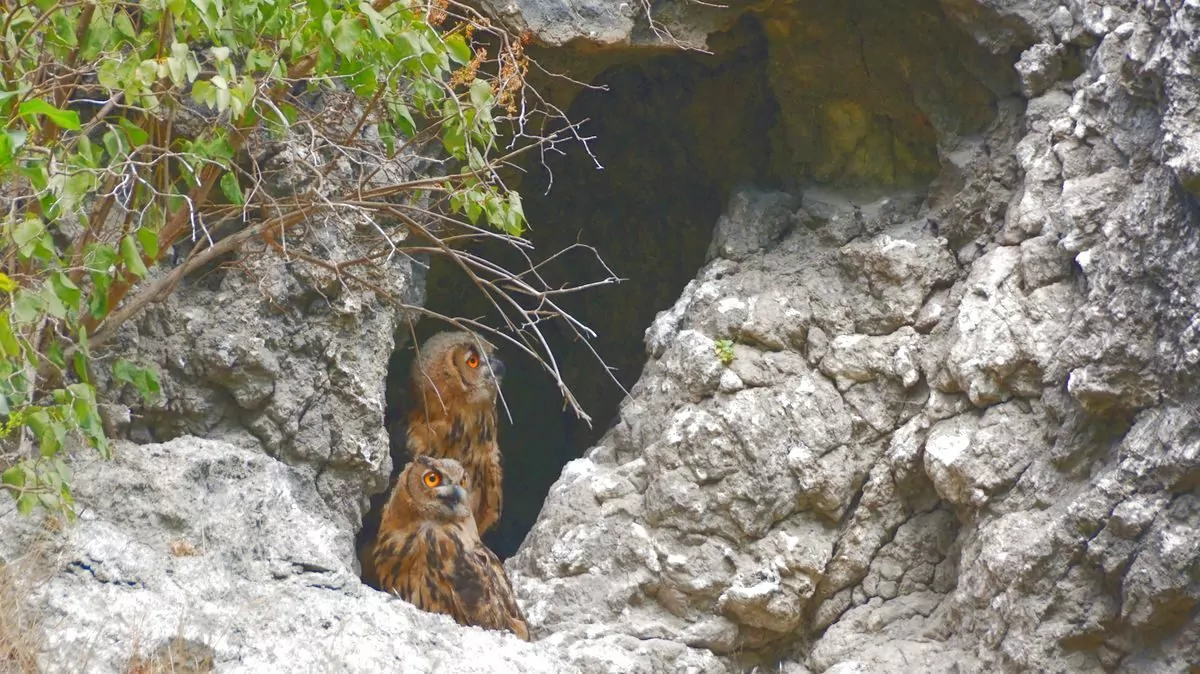






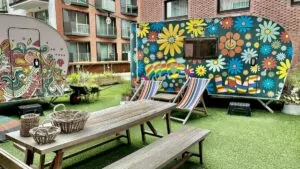
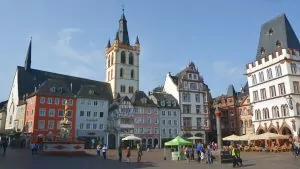
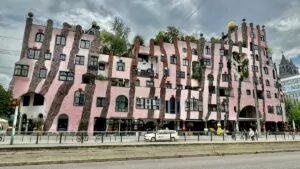


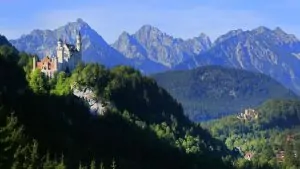

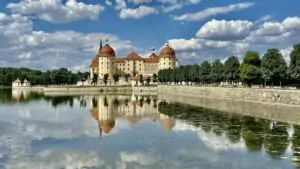


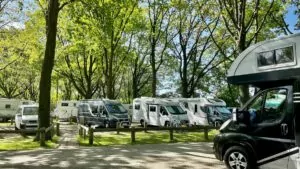
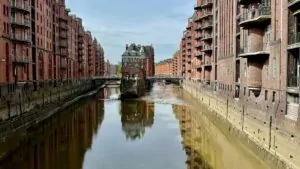
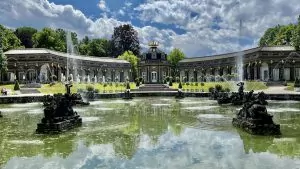

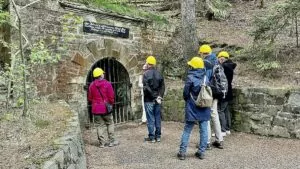
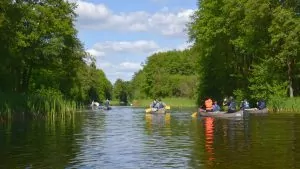
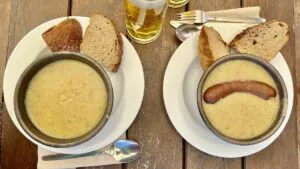
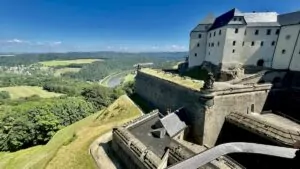
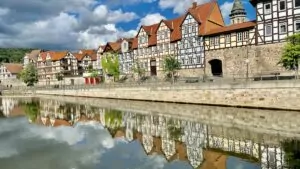

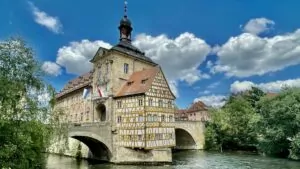

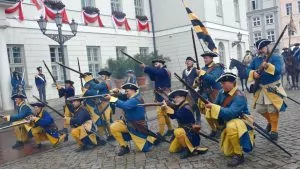


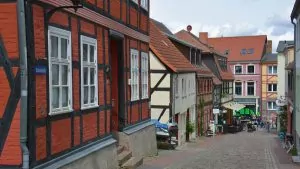
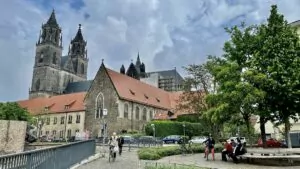
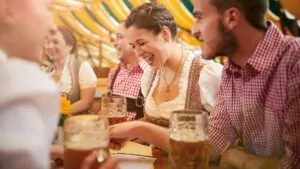
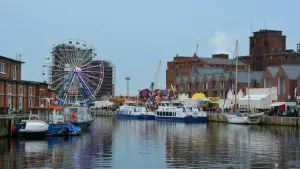
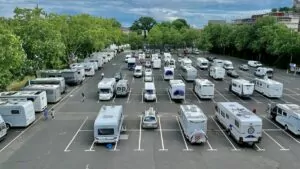

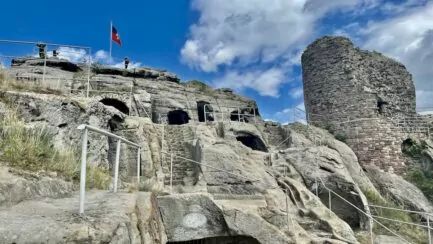
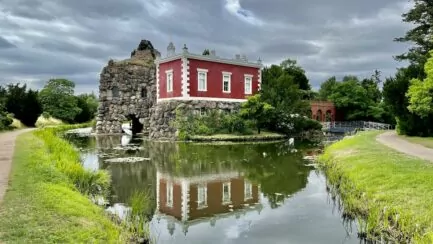
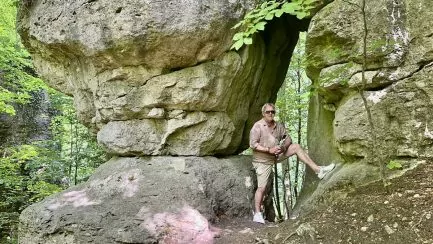

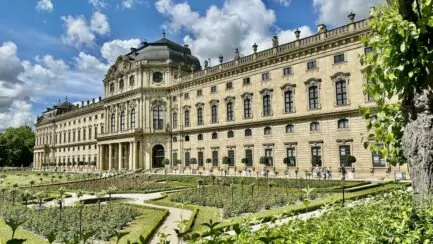
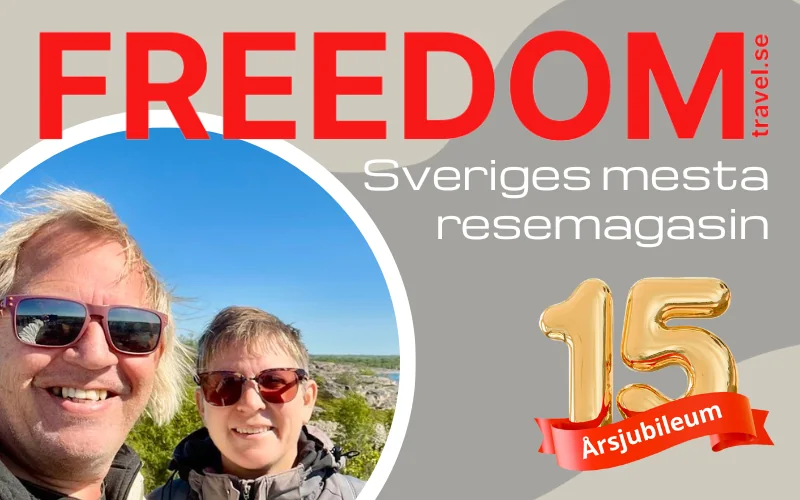


Lena - good for the soul says:
But my God, there are so many caves! Having dinner in a salt mine sounded really cool. Another post to keep in mind.
Hug Lena
17 June 2020 - 9:42
Lena in Wales says:
Exciting!
I've spent a lot of time in Germany, but haven't visited any of these caves, even though I've been close by.
Happy Midsummer!
17 June 2020 - 10:38